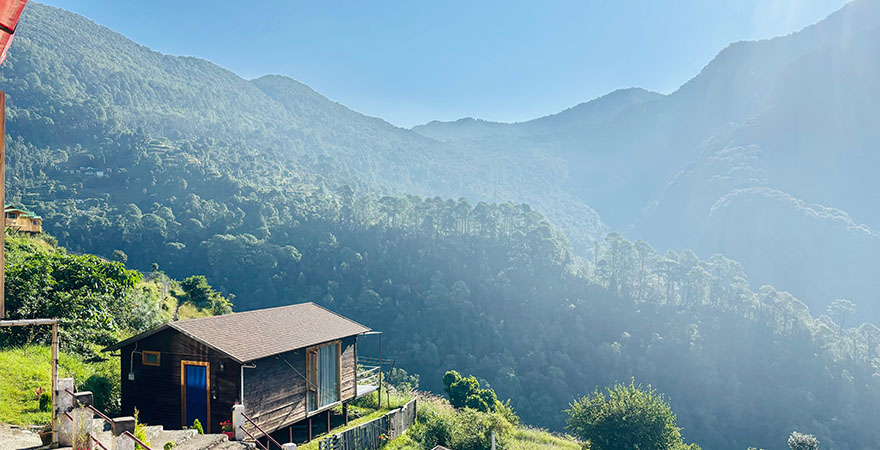"Travel brings power and love back to your life." — Rumi
A 2022 study from an Indian university revealed that nearly 46% of students and working professionals experience digital eye strain. Symptoms like fatigue, blurred vision, and persistent headaches are often linked to spending over seven hours a day on screens. Globally, even short breaks from digital exposure can improve sleep quality by nearly 30%. Now imagine what a full week offline could offer.
Below are some of India’s most soul-refreshing destinations. These places are not chosen for Wi-Fi strength or selfie potential, but for what they allow you to leave behind: noise, urgency, and the weight of constant notifications.
Spiti Valley, Himachal Pradesh

The road to Spiti is long and winding, often taking 10 to 12 hours from Manali across rugged terrain. And that journey is part of the magic. With every hour, the digital world fades. At 12,500 feet, the crisp air and mountain silence reset your pace. No notifications can compete with snow-rimmed peaks or the feeling of being fully present.
Ziro Valley, Arunachal Pradesh

Ziro welcomes you into a different rhythm. Located at about 1,500 meters above sea level, it is surrounded by pine forests, terraced fields, and the slow traditions of Apatani life. While its music festival draws crowds in September, the rest of the year is defined by quiet trails, muddy paths, and a sense of stillness you can feel in your breath.
Pangot, Uttarakhand

Only 13 kilometers from Nainital, Pangot feels like stepping into another world. Dense oak forests, winding trails, and over 150 species of birds make mornings memorable not for selfies but for the joy of recognizing a new birdsong. Here, the forest invites you to listen rather than scroll.
Bangaram Island, Lakshadweep

Bangaram is remote in the best way. Reach it by flying to Agatti Island and taking a short boat ride. With fewer than 30 visitors at a time, the island offers uninterrupted views of coral reefs and sunsets. The silence is not forced; it is simply what the island offers naturally.
Kanha National Park, Madhya Pradesh
Kanha spreads across more than 2,000 square kilometers, with a protected core of 940 square kilometers where tigers move freely. But what stays with you isn’t just the wildlife. It’s the feeling of being small beneath towering trees, tracking deer prints on a quiet trail, and realizing how many thoughts dissolve when you stop checking your inbox.
Wellness Retreats: Coming Back to Yourself
Beyond travel, India offers intentional spaces designed to heal the body and still the mind. These retreats invite you to pause, reset, and begin again.
In Goa, a three-day immersion in sound healing and Hatha yoga gently recalibrates your nervous system without the need for apps.

Near Mumbai, a five-day silent retreat beside a peaceful lake encourages creative expression through art, farming, or simple stillness.

Around Bengaluru, a seven-day wellness program blends hydrotherapy, personalized yoga, and nature-based therapies.

In Rishikesh, an eleven-day Vipassana retreat offers deep silence and a rediscovery of inner spaciousness you may have forgotten was possible.

Why Digital Detox Matters Now More Than Ever
Technology is essential, but uninterrupted digital exposure takes its toll. It’s not just visible in your eyes or posture. You feel it in the background tension you carry without noticing.
In a 2022 study published in the Journal of Behavioral Addictions, participants who took a one-week digital break experienced:
- A 60% drop in stress levels
- An average of 30 minutes more sleep each night
- Notable improvements in focus, posture, and even blood pressure
Even the mere presence of a phone has an impact. A study from the University of Texas found that having a smartphone nearby even when silent and face down reduced cognitive capacity by over 10%. Your mind knows it’s there and continues to stay alert.
Digital detox is not about abandoning your devices. It is about creating moments of intentional pause. Over time, these pauses become spaciousness. You sleep better. Think more clearly. Breathe more deeply.
For Older Adults: Nature as Gentle Medicine
In a world that often speeds up, older adults benefit even more from nature-based mindfulness. One study showed that seniors who spent at least two hours per week in green, natural settings reported a 26% rise in life satisfaction.
A Deeper Kind of Awareness
Choosing to disconnect often leads to other shifts too, like environmental mindfulness. According to the Ministry of Environment, Forest and Climate Change, India generates over 3.5 million metric tonnes of plastic waste every year.
Your individual choices using a refillable water bottle, avoiding disposable packaging, respecting nature may seem small. But in quiet places, those choices feel more meaningful. You start to notice your impact.
Before You Set Out…
What Should I Pack for a Wellness Retreat?
Begin by checking the retreat’s guidelines. Pack breathable clothing, a notebook for thoughts that may surface, and a yoga mat if not provided. Bring your phone, but consider placing it in a soft pouch. Let it rest when you do.
Is Solo or Group Travel Better for a Detox?
That depends on what you seek. Solo travel offers solitude and deep self-reflection. Group retreats provide quiet community, shared silence, and occasional encouragement. Even companies now offer curated team retreats for employees to unplug together.
What Should Be Avoided at a Retreat?
Avoid loud conversations, excessive screen use, and single-use plastics. Respect shared spaces and moments of quiet. Most importantly, let go of the urge to document every moment. The more present you are, the more memorable the experience becomes.
This Is Your Invitation
This journey is about stepping into spaces where you don’t need to perform. It is a chance to feel spacious again.
Choose one place. Let it hold you. Walk slowly. Breathe deeply. Leave behind what doesn’t serve you and rediscover what does.







